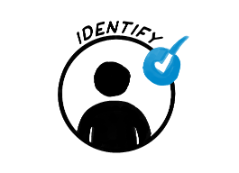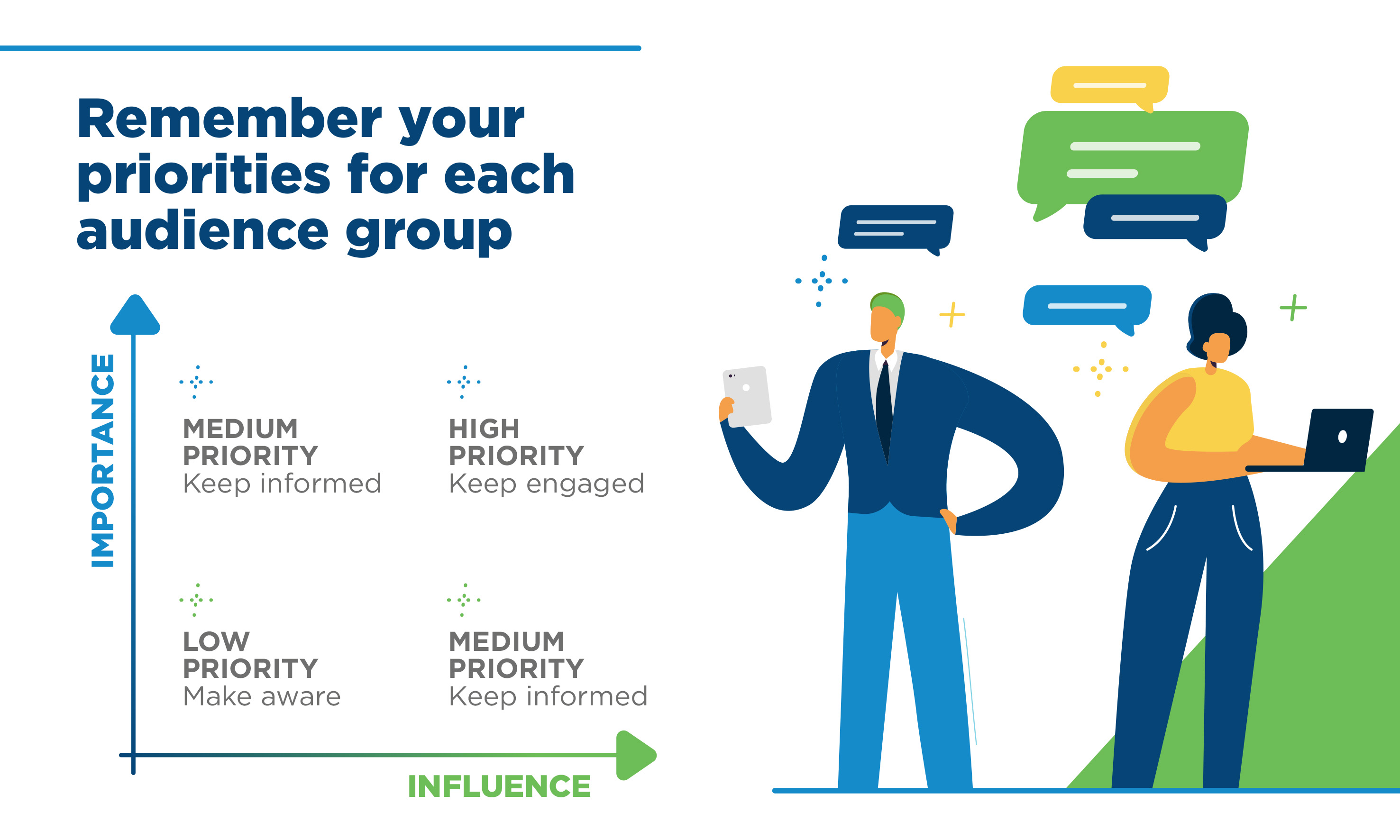
Identify your audience
 To promote your research effectively, it is crucial to identify, know and prioritise your target audiences, so that you can work out the best way to communicate with the right people. But first, you need to identify your strongest outputs and think about how to properly acknowledge your partners and collaborators.
To promote your research effectively, it is crucial to identify, know and prioritise your target audiences, so that you can work out the best way to communicate with the right people. But first, you need to identify your strongest outputs and think about how to properly acknowledge your partners and collaborators.
Identify your best outputs
Your audiences might suffer from information fatigue if you share every single output with them. So think carefully about what you're promoting. Which of your outputs are strongest? Which best represent your excellent research? Which contain the most robust, interesting and valuable findings? Consider these questions so that you can put your best foot forward when promoting your research.
When applying for funding, researchers are increasingly being asked to write so-called "narrative CVs", describing their key achievements in a series of structured paragraphs. You can only include a limited number of publications in these CVs, so it's good practice to work out which are strongest. For more information, see our guide on (opens in a new window)how to write a narrative CV.
Identify your partners
Research is rarely done in a vacuum. Your outputs have probably benefited from the work of many people, such as research collaborators (both within and beyond UCD), staff, technicians, mentors, industry partners, publics, and so on. Where suitable, make sure these partners are included in any promotional activities you undertake. Writing a tweet? Tag them in it. Presenting at a conference? Include a slide of acknowledgements. Publishing an output? Include a (opens in a new window)taxonomy of credit.
If you use an engaged research approach, work with your community partners to develop a communication strategy together. Your community partners can help you identify different audiences for your research, and will likely have great insight into the key messages from their perspective. These messages can often be quite different from those aimed at an academic audience. Community partners are often adept at communication that reaches beyond the academic sphere, so it's in your interest to work together.
Identify and know your audiences
Many different people across society may be interested in or affected by your research, including policymakers, other academics, the mainstream media, charities, NGOs, businesses, and of course members of the public. This last group might consist of patient cohorts, families, school children, inhabitants of a specific place, and so on.
The list is endless, and it can be difficult to know who you want to reach. Ultimately, you first need to work out what you want to achieve, whether it's boosting your profile as a researcher, creating positive change in society, or raising awareness of an issue close to your heart. Below are a few potential audiences to get you started.
Citation increasers
If your aim is solely to increase citations, your audience will traditionally be other academics, although raising the profile of your research elsewhere can also contribute to citation impact.
Beneficiaries
If you want your research to make a meaningful difference in society, you might want to start by thinking about who stands to benefit from it, and the resources in our Impact Toolkit can help you do just that.
Gatekeepers
Consider the different needs of any potential audience. Will you need to communicate with them via a so-called gatekeeper organisation? Such organisations can be important to your research for many reasons, and it might be in your interest to keep them engaged throughout the project life cycle. Examples of gatekeeper organisations include:
- Patient advocate groups
- Sectoral or civil society representative associations
- Charities and trusts
- Industry associations or federations
- Consumer groups
Think about how these groups prefer to be contacted and engaged. If they are important for disseminating your research to those who can benefit from it, you should think about making contact long before you have an output ready to promote.
Other willing parties
Don't forget other audiences who might be willing to help promote your research or advance your research goals:
- Representative associations or advocacy groups connected with your field
- Partners, collaborators and affiliates
- The general public
When reaching out to the public, get specific. Is your audience a particular demographic? Are there specific subgroups you would like to reach (voters, consumers, school-leavers, etc.)? Answering questions like these can help you identify the most suitable communications formats and channels.
Your personal networks
Lastly, use your existing networks, online and offline, which may be filled with people who can help increase the reach and impact of your research:
- Academic networks within and outside UCD
- Elected representatives
- Government departments, particularly policy research units
- Industry networks
- Community networks
Consider how you might use these networks, and identify people within them with whom you can share your outputs.
Prioritise your audiences
Once you know who your audiences are, prioritise them. Think about their importance to the success your research and their level of influence over its dissemination and impact. Then deploy your efforts and recourses accordingly.
The diagram below shows how you can use this method to work out who to keep engaged, informed and aware of your work. Those in the top-right quadrant, with both high importance and high influence, are your primary audience, and should be kept engaged throughout the research project. Those with either high importance or influence are your secondary audience, and you should think about keeping them informed about your work. The tertiary audience is the lowest priority, but it can be mutually beneficial to make them aware of your research.

By way of an example, consider researchers conducting a longitudinal study of primary school children's lives. They might prioritise their audiences as follows:
- Primary audience (most important and influential): academics and policymakers.
- Secondary audience (important or influential): education professionals and sectoral groups.
- Tertiary audience (potentially interested or supportive, but less important or influential): parents, general public.
Professor Mark Reed's (opens in a new window)Stakeholder Analysis Template is a useful tool for prioritising audiences based on how much they stand to benefit from the research as well as how much they can contribute to it.
Knowing your audiences helps you to determine which communications activities to spend your precious time on, and which are less important. And it means that you can develop tailored messages that reflect the needs and interests of each group.
